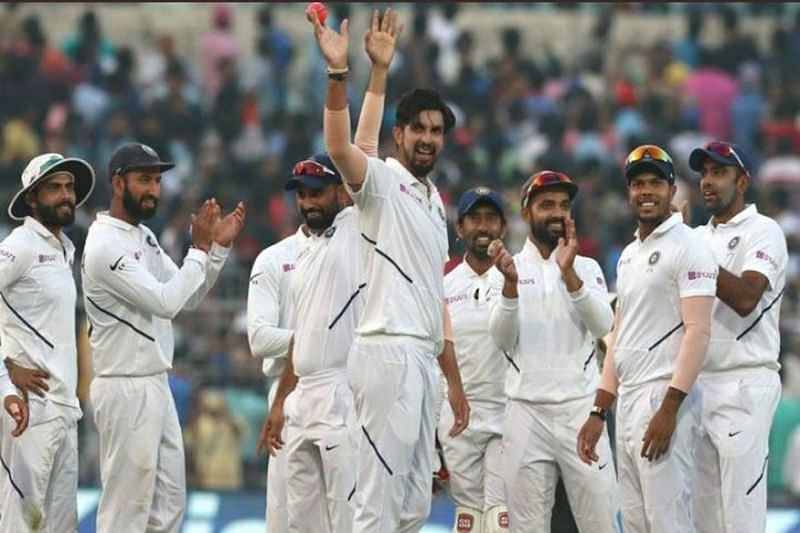
Ishant Sharma: The journey from 'Workhorse' to 'Spearhead' of the Indian cricket team
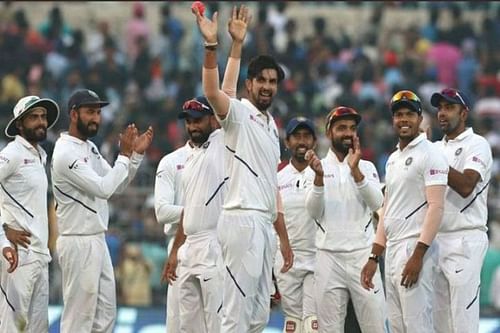
In the Australian summer of 2007-08, a lanky 19-year-old fast bowler from Delhi burst on to the international scene and was destined for bigger things in Indian cricket. 12 years on, that fast bowler has seen many ups and downs and finally seems to have reached the level of performance that he was expected to deliver.
India were recovering from a shock exit from the 2007 ODI World Cup in the West Indies. There was a need to introduce new young blood into the team and the process started with India's tour of Bangladesh in May that year, where Ishant Sharma made his Test debut. He could not impress much with his bowling, picking up only one wicket in the entire game but the pace and bounce generated by him was a topic of interest and he was retained by the team for the tour of Australia as he was one to watch out for.
India were 2-0 down in the Test series and a lot of controversies had already popped up in the tour, right from the Monkeygate between Harbhajan Singh and Andrew Symonds, to the extremely poor umpiring standards in the second Test at Sydney which included decisions that were abysmal at best. India had threatened to abandon the tour but then ended up continuing it in order to play in the spirit of the game. With India having to fight back in the Perth Test and after going neck-to-neck in the first three innings, the match was evenly poised when the then Australian skipper Ricky Ponting was at the crease and Ishant Sharma was in the middle of a long spell. This is where everything changed for him and took him to the next level in international cricket.
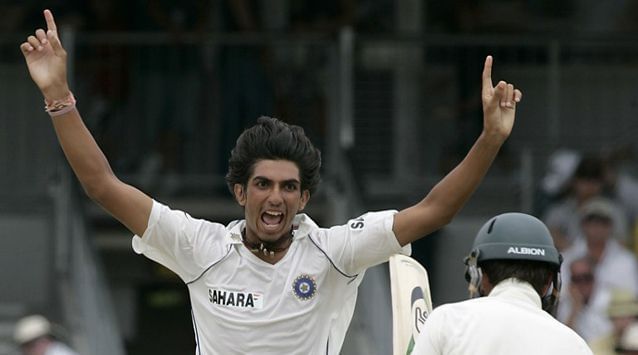
Ishant Sharma had Ponting guessing all the time, swinging the ball into him from a very difficult length and the then-Australian captain simply had to play at every ball. Ishant toiled hard but Ponting survived many close shaves and was still at the crease. However, the 19-year-old did not give up and when he was asked by the captain who said 'ek aur karega?' (will you bowl one more over?), he said 'haa karunga' (I will definitely). Ishant managed to swing the ball away from the same position from where it was pitching before and the ball took the edge of Ponting's bat and landed in the safe hands of Rahul Dravid. This broke the back of Australia's chase and India won the third Test. Although India did not win the series, they were applauded for the kind of grit that they showed. Although 19-year-old Sharma picked up only six wickets in the Test series, he was being tipped for greater things to come due to his bowling consistency.
Also see – Ranji Trophy points table
Ishant Sharma carried his good Test form into ODI cricket as well and it paid dividends as he was the highest wicket-taker for India in the tri-nation ODI series which included Sri Lanka. He picked up 14 wickets from 9 games and helped India win their first-ever ODI series Down Under. His seam presentation and pace coupled with consistent line and length was very tough to handle for the batsmen and this is where Ishant Sharma became an overnight sensation. He had a stellar next couple of years as he picked up 56 wickets in 40 ODIs which were very impressive numbers.
However, like in the life of every sportsman, even Ishant Sharma had to face his ups and downs. He became more and more injury prone and began to bowl an inconsistent line and length. His seam positioning which used to be his strong point began to become his weak link as he more often than not began bowling with a scrambled seam. He could play only 7 more ODIs over the next three years due to a combination of injuries and inconsistent bowling.
While he was getting dropped from the ODI team, Ishant Sharma continued to be a part of India's Test team and had an impressive 2010 and 2011 as he picked up 76 wickets from 23 Test matches. But then skipper MS Dhoni began to use Ishant Sharma as a 'workhorse' in Test matches. Ishant was considered as someone who would bowl 20 overs in a day and keep the run-scoring in check. He was not used as a wicket-taking option and that further dented his wicket-taking ability as he began to bowl more short and back of the length deliveries. Although he always proved to be economical, he was never really seen as a wicket-taking option. Ishant's famous short-ball ploy against England back in 2014 at Lords was one of the biggest examples of him being used as a workhorse. Although he picked up seven wickets in that innings, it was the batsmen making more mistakes than the bowler bowling wicket-taking deliveries.
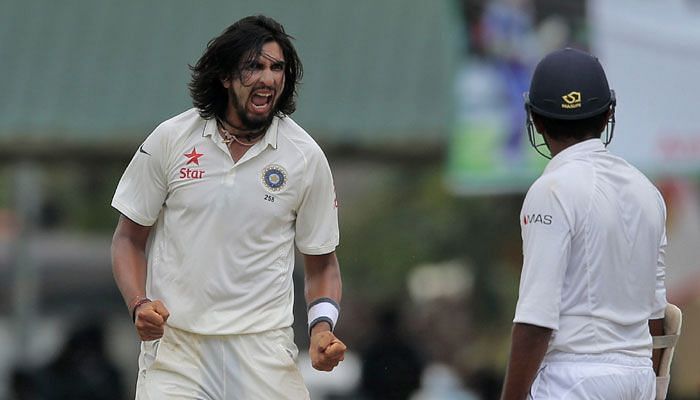
Under Virat Kohli's captaincy though, Ishant Sharma began to show signs of returning to his best. In Kohli's first full series as a skipper, Ishant Sharma picked 13 wickets in three games and was one of the reasons why India won a Test series in Sri Lanka after a long time. He had begun to understand his role as a Test specialist and was encouraged by Kohli to set his own field and bowl according to it. Ishant has had a fantastic last two years and can safely be called as the spearhead of the Indian pace battery that includes Umesh Yadav, Jasprit Bumrah, Bhuvneshwar Kumar and Mohammad Shami.
While the others had their roles assigned, Ishant's role was to provide experience to the younger bowlers and to swing the ball by pitching it further up. He took the help of former Australian speedster Jason Gillespie who gave him tips about how to land the ball on the same fuller length consistently. He was also guided by Zaheer Khan on keeping an upright seam position instead of a scrambled seam. In 2018, when India had important tours of South Africa, England and Australia, Ishant Sharma picked up 41 wickets in 11 Test matches at a brilliant average of 21.80. He leads the Indian pack with some brilliant swing bowling upfront and to pave the way for the likes of Bumrah and Shami to create havoc from the other end and then with the new ball.
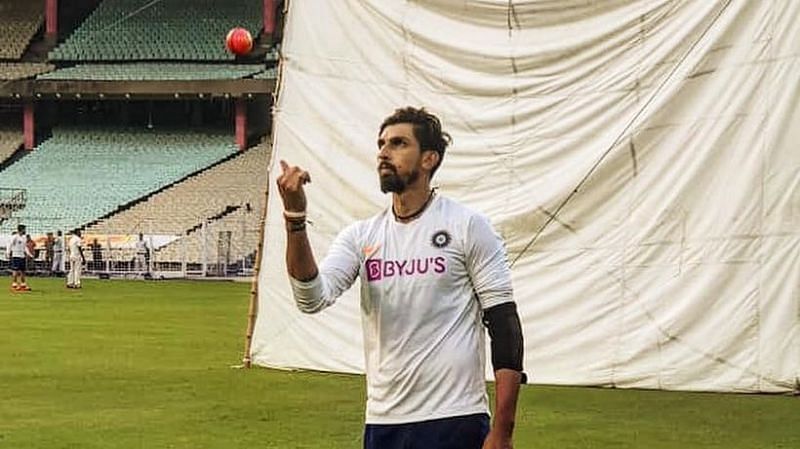
The year 2019 was even more special for Ishant as he helped team India win a Test series in Australia for the first time. That was backed up by a fantastic home season where thee trio of Ishant, Umesh and Shami troubled the batsmen on pitches that did not even have any great help for the quicks. A lot of credit for this goes to the fitness regime of Virat Kohli that the team has incorporated into its culture. In 6 games in 2019, he has picked up 25 wickets at an astonishing average of 15.56.
Ishant has realised that the main reason that he has been able to do well for India is that he stopped putting too much pressure on himself to perform in each game. The Delhi quick stopped bothering about comparisons with other greats like Zaheer Khan and Kapil Dev on the kind of performances they had for India in a similar amount of test matches. With the tours of New Zealand and Australia lined up in 2020, Ishant Sharma will be hoping that he will be able to deliver a consistent line and length bowling that will eventually help his team do well. In all right terms, Ishant has come of age and has transformed himself from a workhorse to a true spearhead of the Indian pace attack.